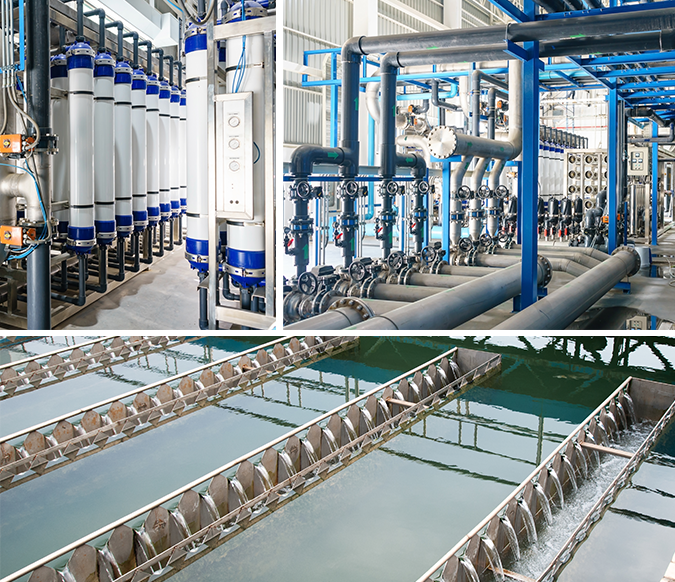Water & Wastewater Treatment
About Water & Wastewater Treatment
Water and wastewater treatment is a vital process aimed at enhancing water quality, and the specific methods employed can vary depending on the intended use. Treated water finds application in a multitude of scenarios, including drinking water, industrial processes, irrigation, sustaining river ecosystems, and even recreational purposes in water parks.
In essence, the water, wastewater, and effluent treatment process involves the removal or reduction of contaminants and undesired substances from the initial wastewater or effluent. The degree of treatment is adjusted to meet the particular requirements of its intended use, ensuring that the resulting water is safe and suitable for its designated purpose.
One of the core activities of Zirsakht Tadbir Arian (ZETA) Company is the implementation of advanced water and wastewater treatment technologies and systems.

Water & Wastewater Treatment Processes
Zirsakht Tadbir Arian (ZETA) company specializes in providing a diverse array of cutting-edge technologies tailored for water and wastewater treatment, with a particular focus on industrial wastewater. Our approach is entirely client-centric, allowing us to undertake full-scale EPC or turnkey projects that encompass every aspect of engineering, design, procurement, and construction, or we can selectively manage individual phases as needed.
Our comprehensive technology portfolio empowers us to customize water and wastewater treatment solutions to meet our clients’ specific requirements, achieving recovery rates of up to 99%. At ZETA, we leverage the latest advancements in technology and equipment to optimize water recovery efficiency, minimize energy consumption, and significantly reduce the environmental impact of wastewater, aligning with our commitment to sustainability and environmental responsibility.
Our Technologies
Zirsakht Tadbir Arian (ZETA) Company stands out by offering a versatile range of solutions and technologies. This versatility allows us to provide expert consultation services to our clients, guiding them in selecting the most suitable technology.
Our recommendations are carefully tailored to factors such as the quality of the inlet water feed, compliance with environmental regulations, and consideration of our clients’ budget constraints. This personalized approach ensures that our clients receive the most effective and cost-efficient water and wastewater treatment solutions for their specific needs.
Our Projects
Latest From Blogs
News & Press Release
